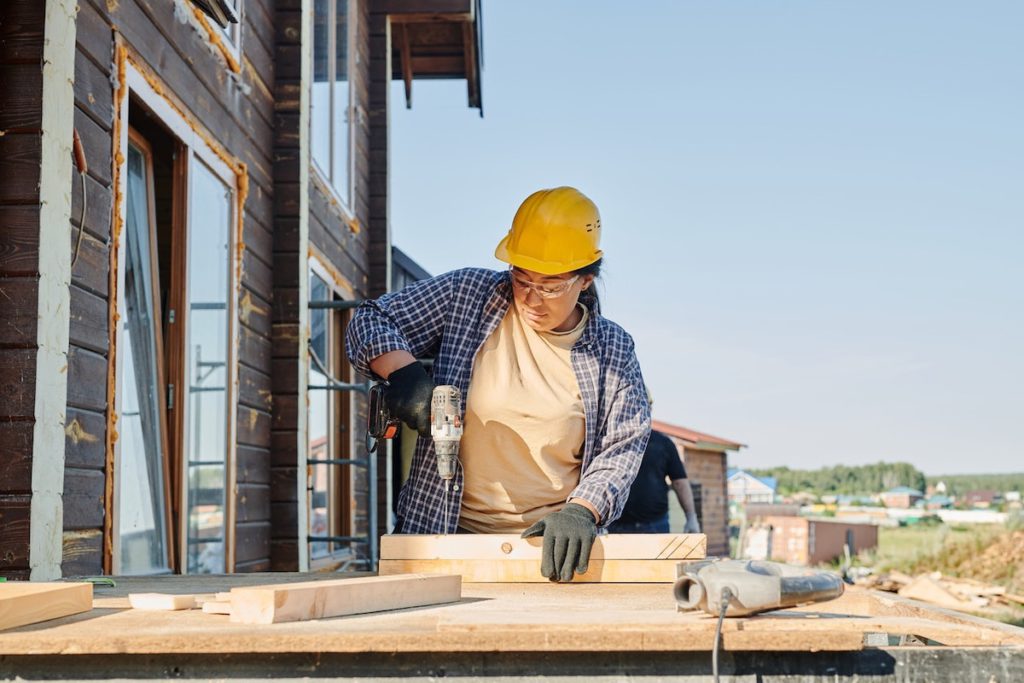The greatest challenge when working in construction is being outdoors all the time. As a woman working in construction, I know the struggles of working outdoors and trying to look nice. The worst is when I’ve just been to a cut and dry hair salon and then I can feel my hair going gross at work. While you exchange ideas with your colleagues and co-workers in the name of creation, you don’t want to be looking odd or awkward wearing a hard hat.
WHY HARD HATS HAVE TO BE WORN IN THE FIRST PLACE
Hard hats were designed to protect the head, its sides, the eyes, and neck from impactful blows of falling debris, scrapes, and exposure to electricity in a construction site.
The Occupational Safety and Health Administration (OSHA) requires employers to provide and instruct their workers to wear this personal protective equipment (PPE) at all times. To reiterate its importance, the Bureau of Labor Statistics of America documented in 2011, 393 fatal injuries happened due to exposure to flying or falling debris in the workplace. At all costs, this must be avoided and prevented.
If you are to ask if wearing a hard hat is needed if there’s no imminent danger, the answer is yes. The thing is, that’s when accidents and injuries usually happen. When sudden dangers arise from unexpected hazards because you thought it was safe.
WHAT NOW?
As you digest that tidbit about hard hats, understand that typically, hard hats are designed with a suspension system internally. Hence, the plastic skeleton-helmet-like structure that you can see inside the hard hat. There are straps that allow you to adjust according to your head circumference so that the hard hat sits still on your head. Is it just for adjusting purposes? Not quite. This internal suspension can be observed among Class A hard hats to absorb the impact of any falling objects on your head so that it doesn’t absorb the full blow, protecting it overall from extensive damage.
For women though, who treat their hair as their crowning glory, they may need to find a way to work it out with this protective gear without looking like a mess. Wearing this the whole day for most days may just defy its purpose if continuously battling with the scrunchie.
Most women who visit a construction site are professional architects, engineers and interior designers that are commonly on-the-go in a formal vibe. Most of the time, hair-do is up and is styled neat and out of the way. But wearing a hard hat on it is not advisable as it makes the straps hard to latch because of a bundle in the way. This makes the hard hat unstable on your head. Considering the fatal incidents, an unstable hard hat could induce more damage than it being a protective gear. Wearing it loose may put a lot of strain on your neck. It results in injury nonetheless.
Many construction workers wear their hair short to solve the hair issue brought by wearing a hard hat long-term. Some cover their hair with a cloth-like Jimmy cap, hair net or wig cap to give ease or cushion for the straps coming in direct contact on the head before putting on the hard hat.
If you like to wear your blow wave curls long, having it in a low ponytail is the best way to do it. It’s impractical to put your ponytail inside or behind your head (occipital area) as this will be in the way of the straps as mentioned before. Also, this may put pressure on your head giving you a headache by the end of the day. It’s not advisable for long-term wear as well.
Braiding your hair into two is also an option and is more desirable to avoid getting unnecessary tangles with any loose wires or open-ended iron rod endings.
Remember that you can not wear metal clips of any kind or metal barrettes in taming small hairs in place. As good conductors, anything-metal coming in contact with the hard hat may interfere with its ability to keep you from getting electrocuted. In line with that, refrain from wearing combs or hair accessories as this may interfere in letting the hat sit right on your head.
It’s not a crime to let your head breathe every now and then by taking off your hard hat at every safe chance you get. And that means being inside your container during a break time away from direct hits and the construction site. Be reminded that an open area doesn’t assure you of safety and covered scaffolding is all the same, risky.
After a hard day’s work, free your hair and wash it well. Any products that may come in contact with construction elements may harden and catch you off-guard of accumulating grime. All of these may serve as contributing factors for the hard hat’s internal suspension to slide off and not sit securely atop your head.
Finally, never exchange safety for vanity. Every day is a way to discover the hairstyle that suits you best, given ample time to prepare. These recommendations are all just options for you to consider, but remember that the head circumference of one person differs from another. For some, high ponytails might work. To others, it might not. Don’t get tired of trying different ways until you find the most comfortable one. From there, your confidence will surface naturally.





